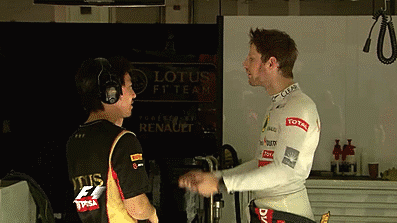Selon lui, la plupart des problèmes ont été causés par les échappements donc par Lotus. Il dit que Lotus a apporté des modifications au niveau de l'aero interne pour permettre a l'air ambiant de circuler autour du moteur, sans passer par les radiateurs et sans se réchauffer donc. Ça se tient car comme je l'ai deja dit, Lotus, pour Bahrain2, a apporté des pontons et un capot moteur différents: Les entrées d'air des pontons ont eté elargies en haut et le capot a maintenant une forme concave alors qu'avant il était plat. Cela suggère que les radiateurs ont été redessinés/réorientés et/ou agrandis.

Si je comprend bien, la soudure des échappements n'a pas supporté ça, d'ou les casses. Ils ont alors empreinte du matériel de Red Bull pour apporter une solution provisoire.
Il dit que le premier incendie a laissé des séquelles qui ont peut-être causé les autres problèmes.
Mais selon lui, la souplesse du moteur a beaucoup progressé (selon Tafin, c'est un des objectifs principaux; améliorer la 'pilotabilité' et atteindre le niveau du V8 dans ce domaine) et selon leurs estimations ils seront bons niveau vitesse et consommation
enotsne
Hello again.
Like to say it was a great test and we now go to Melbourne full of enthusiasm, but alas - not the case.
To be fair. Many of the problems were not Renault/PU related, but most of the problems we faced involved fire/heat damage which is time consuming to rectify and in our case damaged components we wouldn't normally carry in numbers to a test.
We used a new exhaust system for this test and it failed at the collector on the first day and caused some damage to the bodywork and the cooling system. We fitted the existing exhaust design that had been trouble free and that failed in the same spot causing a bit more damage.
During the break between tests, the internal side pod ducting was changed to duct ambient airflow around the ICE (it was previously 'post radiator' airflow). It appears that by ducting lower temperature air over the engine (and the exhaust), it altered the expansion of the first runner, causing weld failure.
We borrowed Red Bulls vast collection of power tools and hammers and modified the radiator surround and partially blocked the ambient air duct and it seems to have solved that issue. A more elegant solution should be sorted by Melbourne.
Todays running ended early and saw our first ICE failure but we are yet to find out what failed. Its definitely internal and terminal but may be related to fire damage on Friday that damaged the oil cooler resulting in the computer killing the ICE.
On a more positive note, it appears from our limited running that the ERS driveability issues have been improved substantially and other teams have clocked up a few miles without any ERS hardware failures. Our simulations and calculations show we should be in the game as far as pace and fuel efficiency is concerned...
I believe a new coffee machine was ordered back home for the long nights ahead but apparently it caught fire. Go figure.






 a9638aac07, j’en ai ma claque de changer les cartographies en roulant
a9638aac07, j’en ai ma claque de changer les cartographies en roulant 
